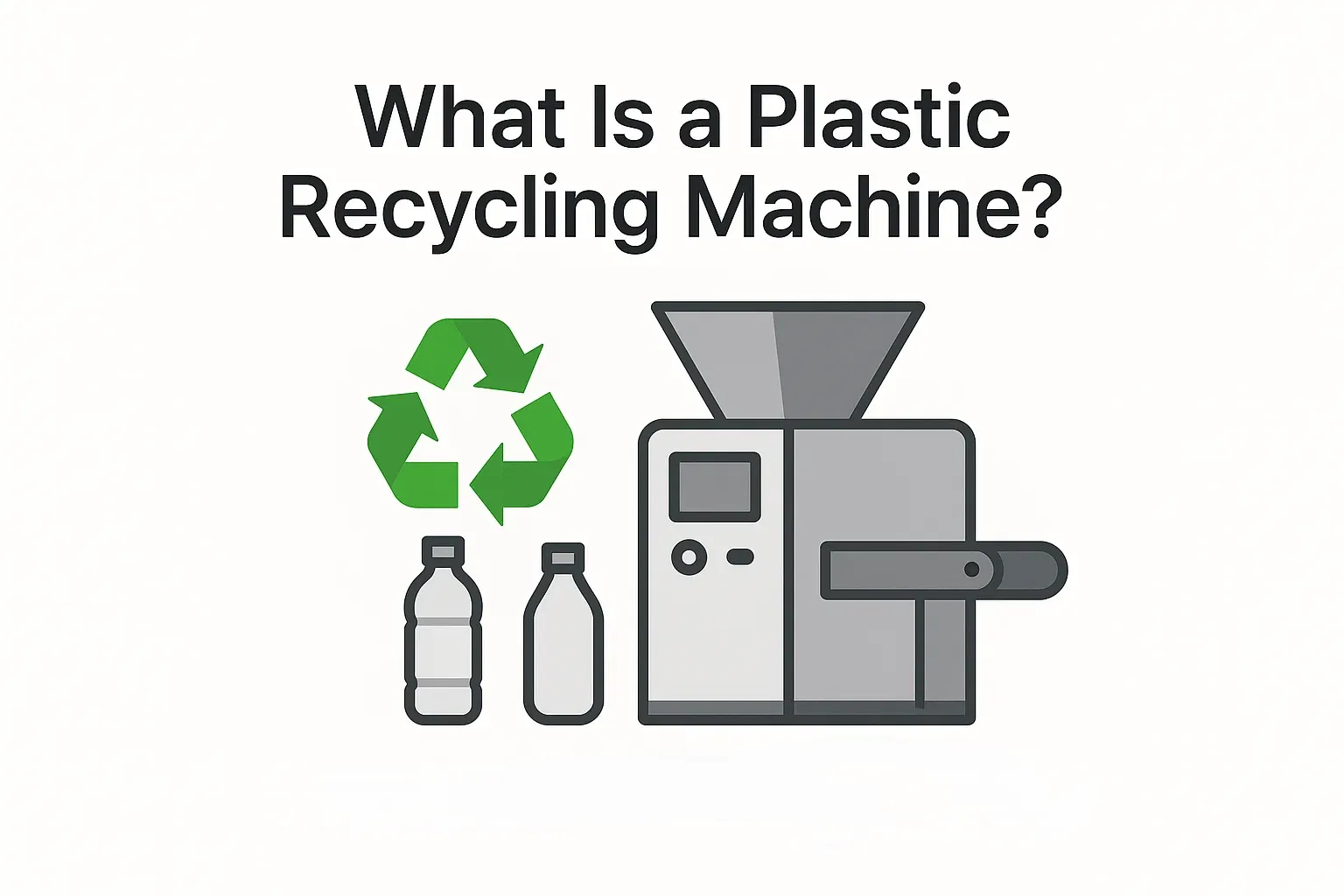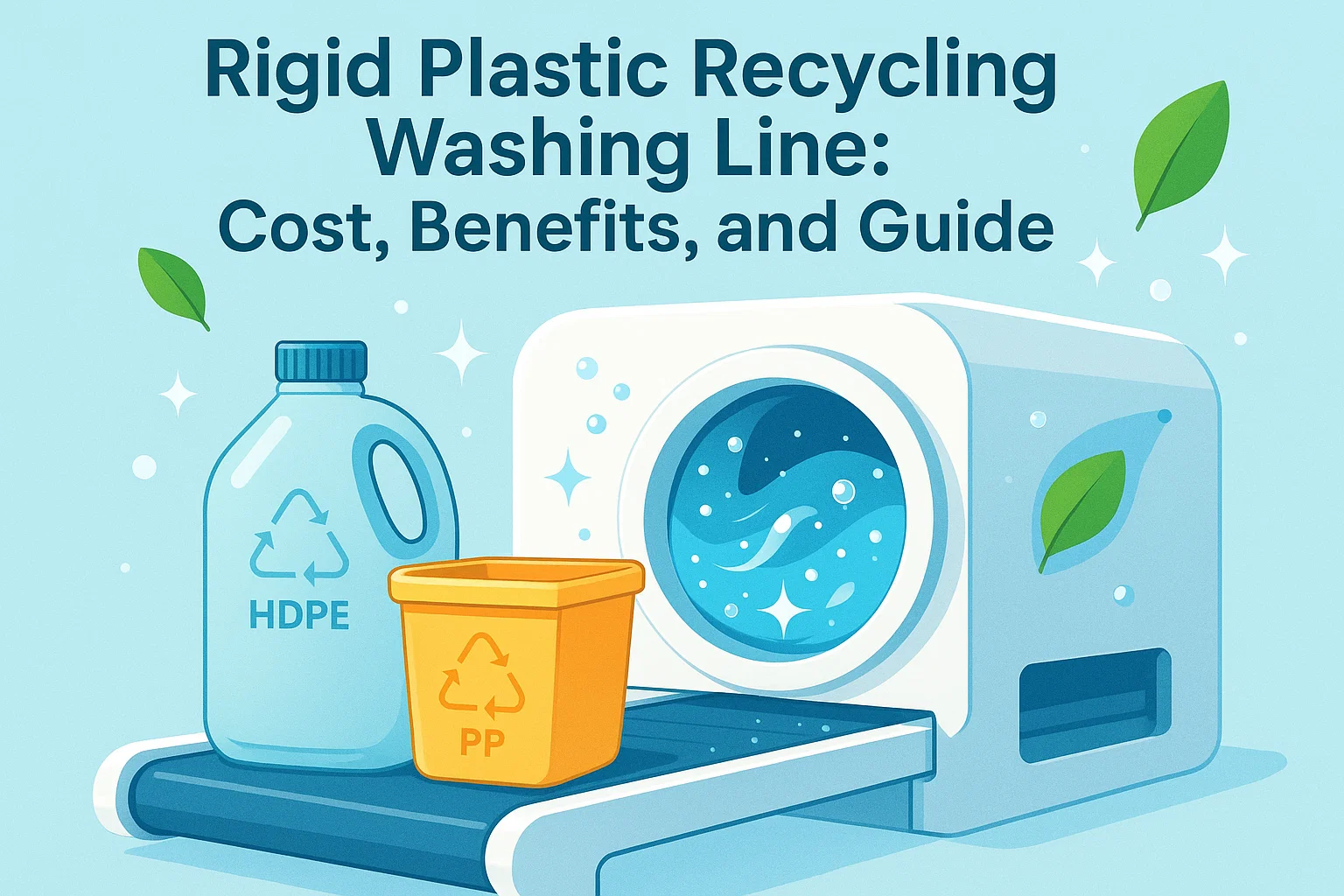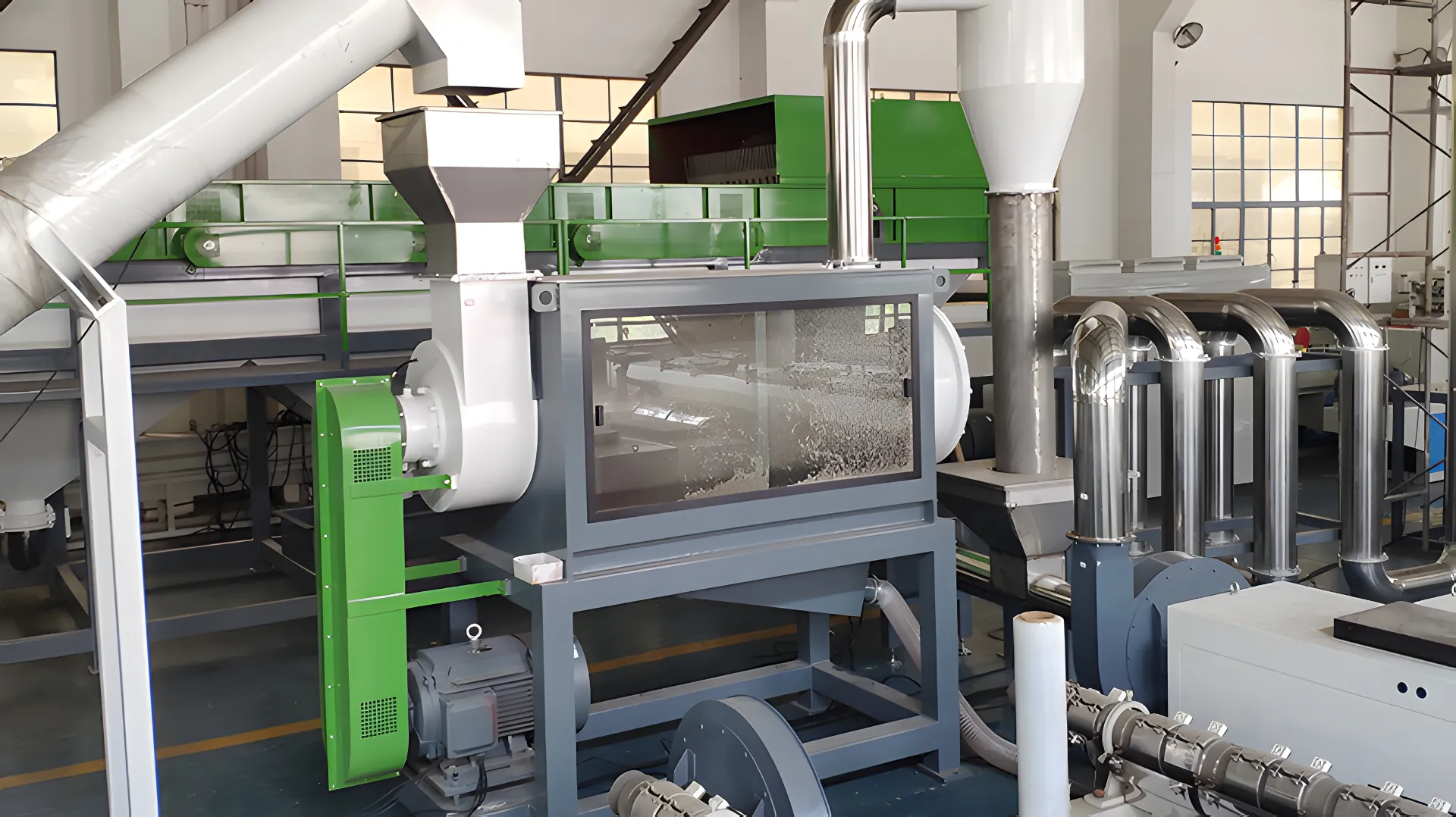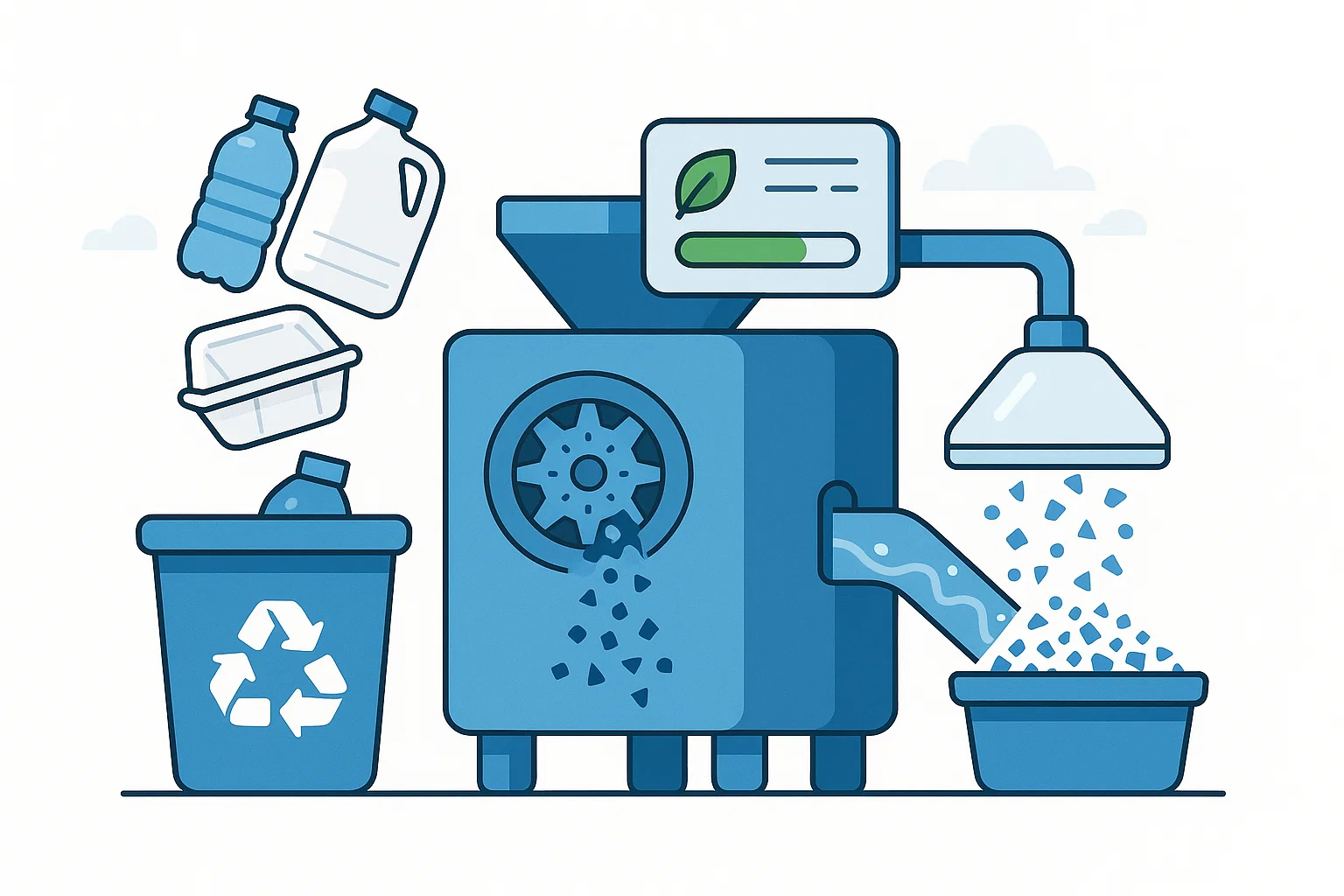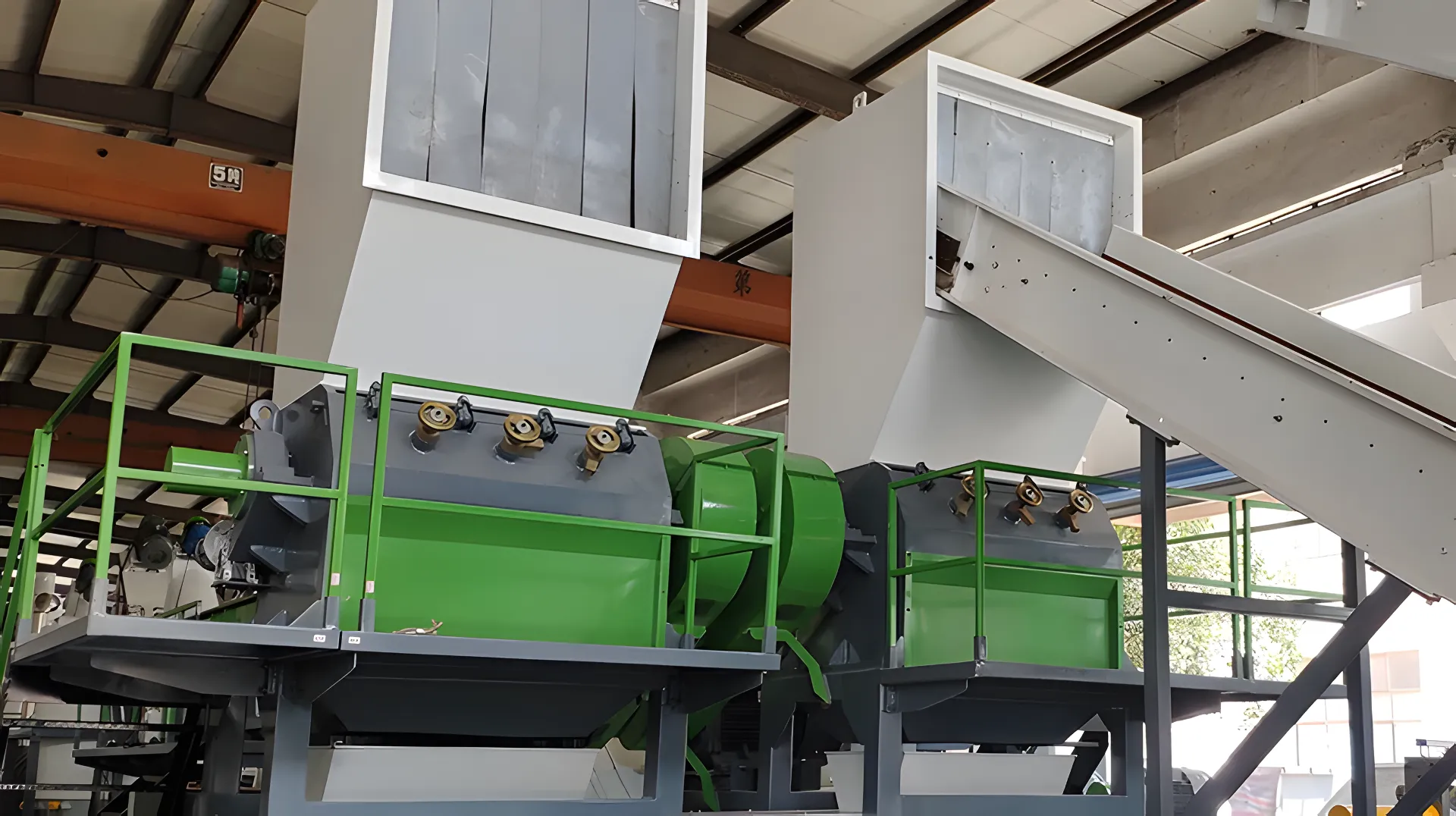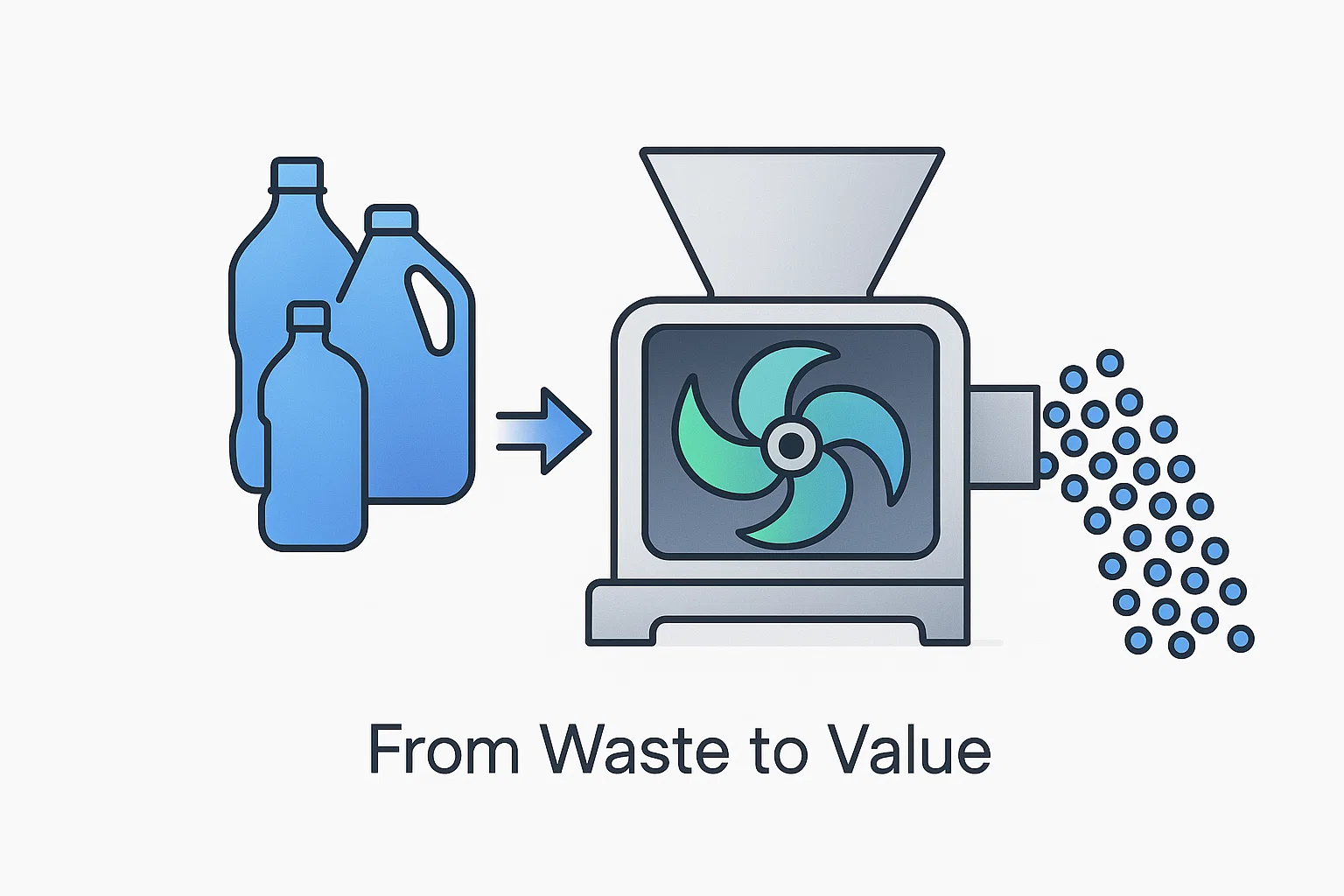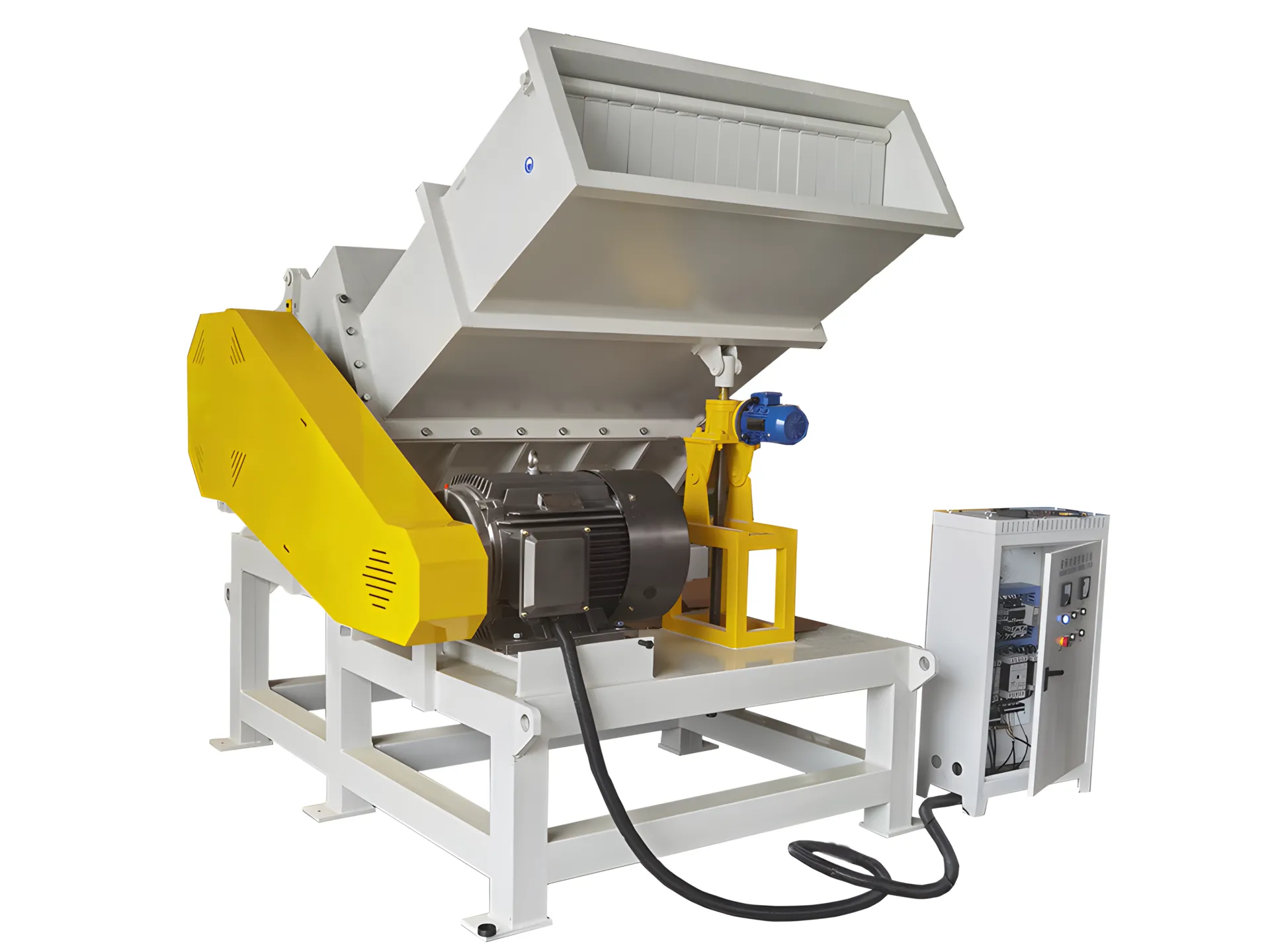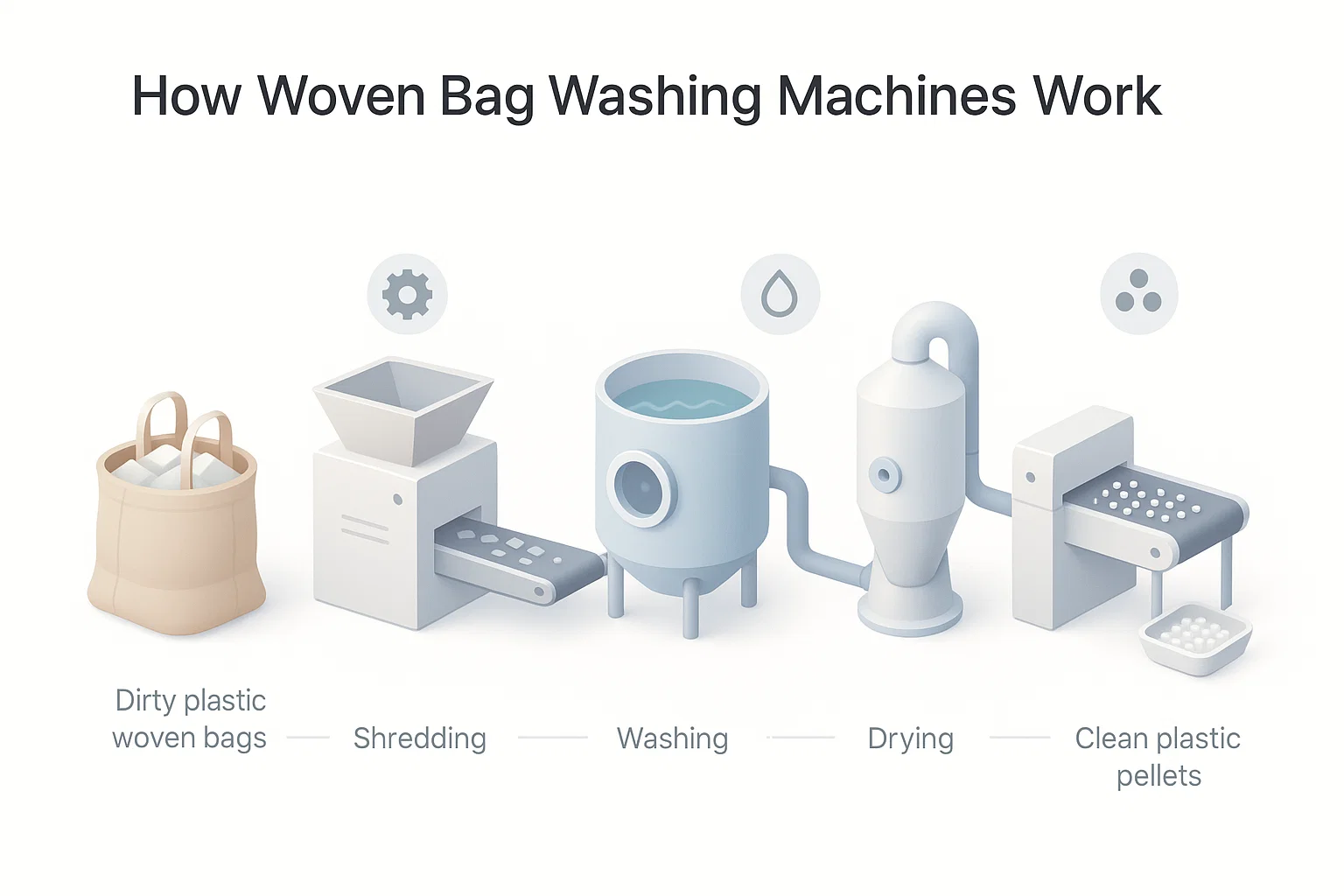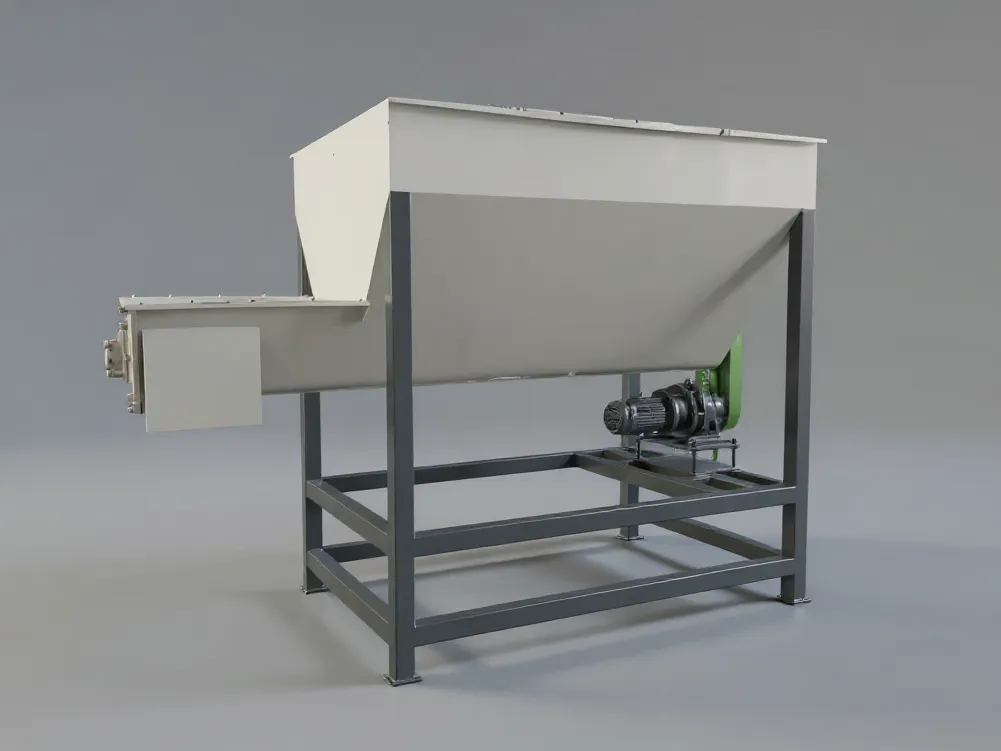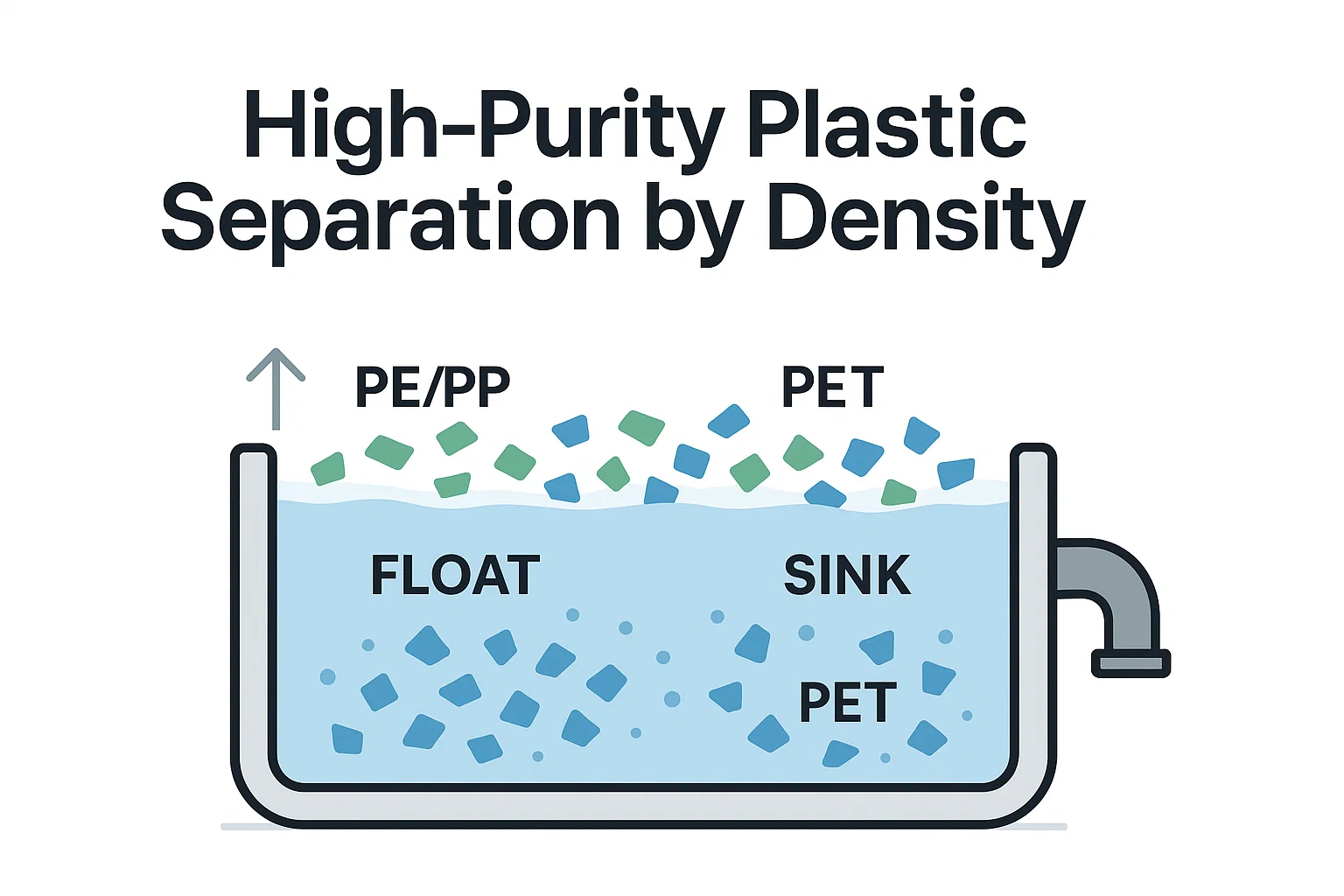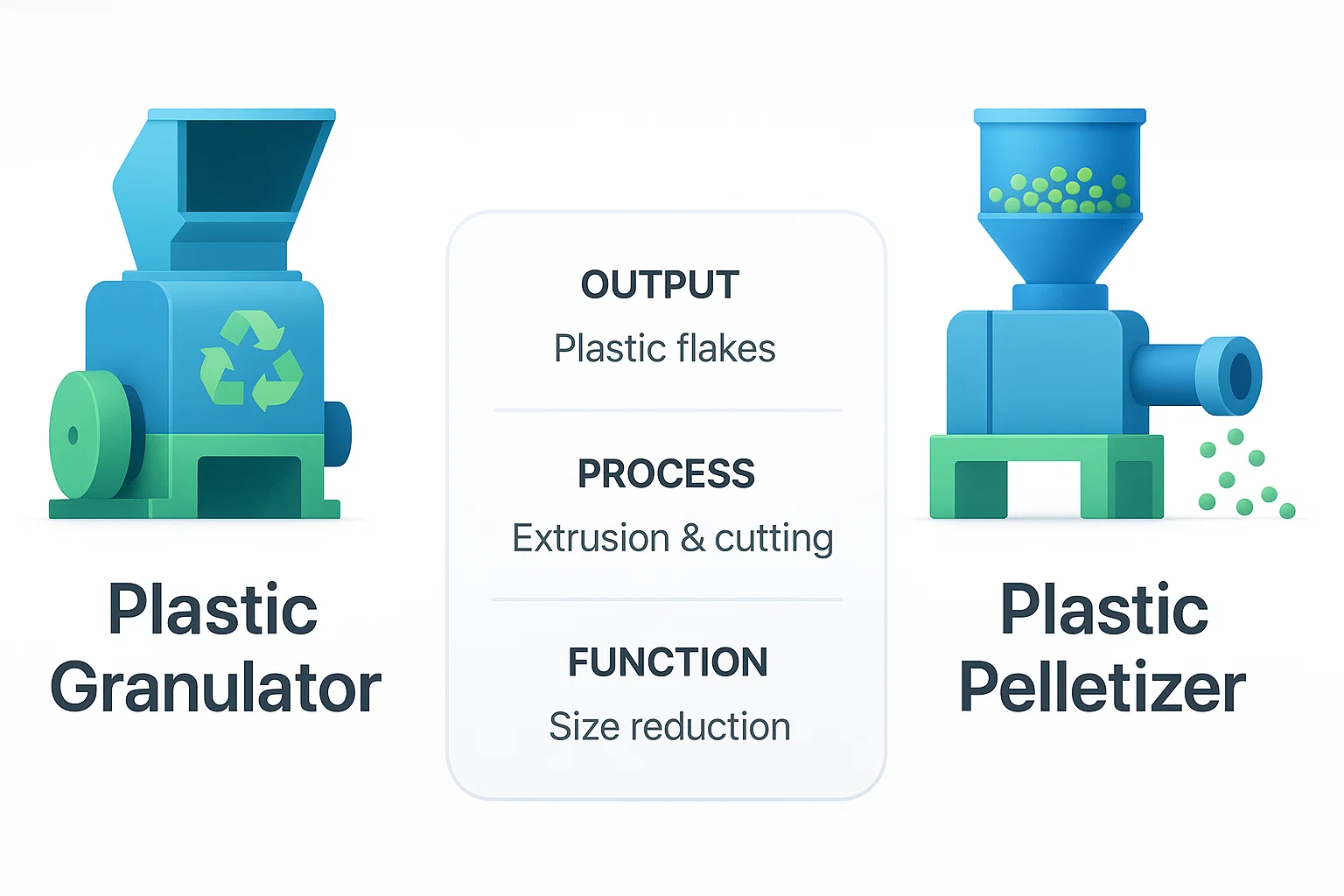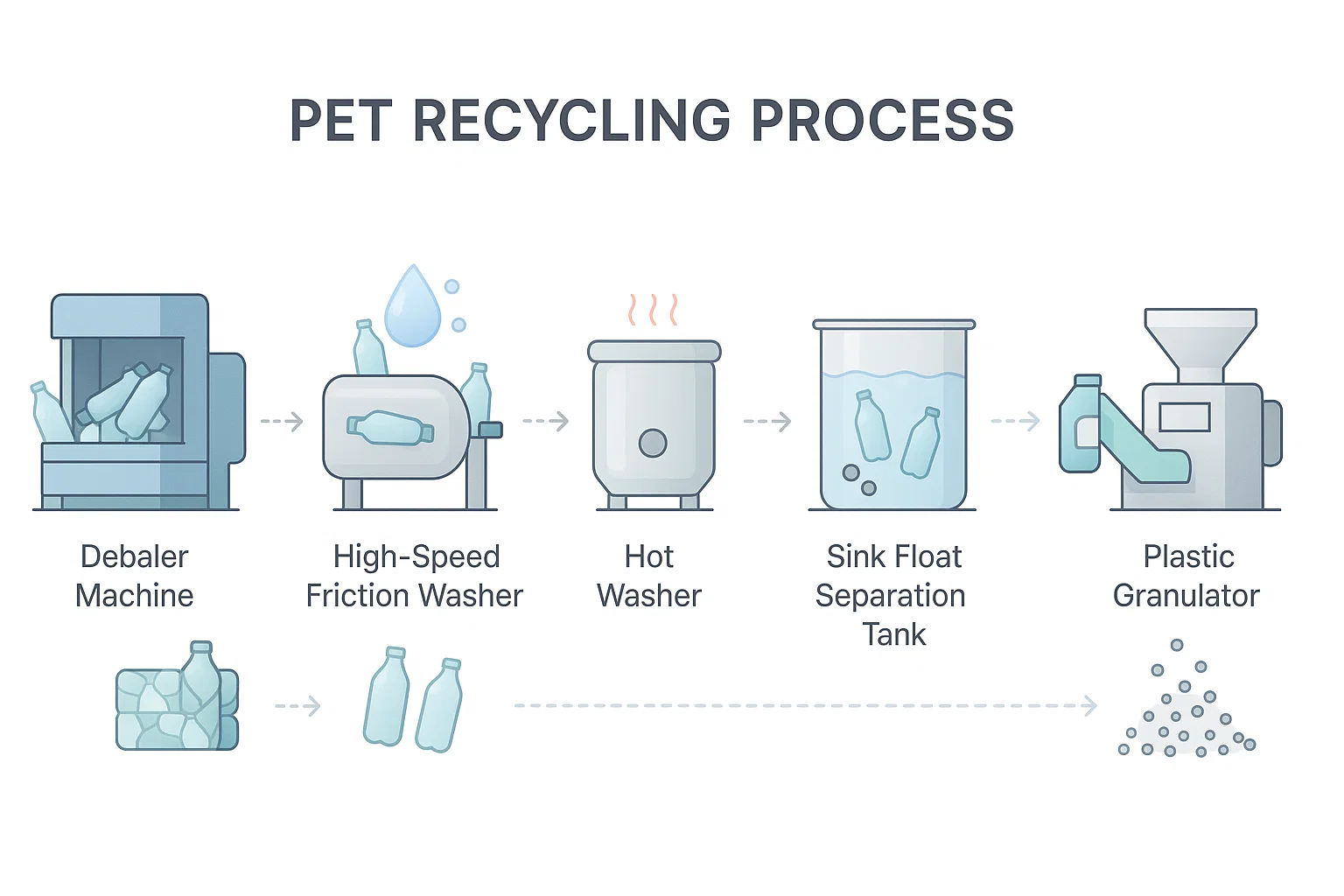Recycling News
Introduction: The Challenge of Wet Plastics
In the world of plastic recycling, moisture is the enemy. Whether you're processing washed plastic flakes or regrind, excess water can slow down production, compromise the quality of the final product, and increase energy costs. So, how do you solve this common bottleneck?
Enter the Centrifugal Dryer Dewatering Machine. This powerhouse piece of equipment is a game-changer for any plastic processing line, designed to remove water quickly and efficiently. In this guide, we’ll take a friendly deep dive into what these machines are, how they work, and why they are an essential investment for your operation.
Decoding the Centrifugal Dryer Dewatering Machine
Think of a high-tech, industrial-grade salad spinner, but for plastics. At its core, a centrifugal dryer dewatering machine is a mechanical dryer that uses immense rotational force to separate water from plastic materials like PET flakes, PE/PP films, and other rigid plastics.
Unlike thermal dryers that rely on heat (which can be slow and energy-intensive), a centrifugal dryer physically slings water away from the plastic particles. This process dramatically reduces the moisture content in a matter of seconds, preparing the material perfectly for the next stage, such as extrusion or pelletizing.
The Science Behind the Spin: How It Works Step-by-Step
The magic of a centrifugal dryer lies in its simple yet powerful principle. Here’s a breakdown of the process:
Feeding the Material: Wet plastic flakes or particles are fed into the machine's inlet, usually via a screw conveyor, and enter a vertical or horizontal chamber.
High-Speed Rotation: Inside the chamber, a central rotor with attached paddles or blades spins at very high speeds (typically 1,500+ RPM).
Centrifugal Force in Action: This intense spinning motion creates a powerful centrifugal force. It presses the plastic material against a cylindrical mesh screen that surrounds the rotor.
Water Separation: While the solid plastic particles are too large to pass through the screen's perforations, the water is forcefully expelled through the tiny holes and collected at the bottom for drainage.
Discharge of Dry Material: The now dewatered plastic continues its journey along the rotor and is discharged from an outlet, ready for further processing with a significantly lower moisture content.
Key Components That Make It Happen
Rotor with Paddles: The heart of the machine, responsible for spinning the material at high velocity.
Perforated Screen: A durable, cylindrical mesh that allows water to escape while retaining the plastic.
High-Torque Motor: The powerhouse that drives the rotor's rotation, ensuring consistent speed and force.
Inlet and Outlet Ports: Allow for the continuous flow of material through the system, making it perfect for integration into a full washing line.
Robust Housing: Encases all components, ensuring safe operation and directing the expelled water for collection.
The Unbeatable Advantages of Centrifugal Dewatering
Integrating a centrifugal dryer into your recycling line offers a host of benefits that directly impact your efficiency and bottom line.
Unmatched Speed and Throughput: Dramatically reduces drying time from hours to minutes, eliminating production bottlenecks and increasing your overall output.
Superior Final Product Quality: By rapidly lowering moisture content (often to below 1.5%), it prevents issues like bubbling and degradation during extrusion, resulting in higher-quality, more valuable plastic pellets.
Significant Energy Savings: These machines consume far less energy compared to traditional heat-based drying systems, leading to lower operational costs and a greener footprint.
Compact Footprint: Centrifugal dryers are relatively compact, making them easy to integrate into existing recycling lines without requiring a massive amount of floor space.
Where Do Centrifugal Dryers Shine? Key Applications
These versatile machines are indispensable in a variety of plastic processing industries:
PET Bottle Recycling Lines: Essential for dewatering crushed PET flakes after the washing and rinsing stages.
PE/PP Film and Bag Recycling: Efficiently removes water from light, flimsy film materials that are notoriously difficult to dry.
Rigid Plastic Recycling: Perfect for drying regrind from materials like HDPE, ABS, and PS.
For a closer look at how these machines are integrated into a complete system, you can explore our centrifugal dryer dewatering machine for plastic drying solutions and see them in action.
Keeping Your Machine in Peak Condition: Maintenance Essentials
To ensure your centrifugal dryer operates flawlessly and enjoys a long lifespan, a little regular maintenance goes a long way.
Daily Screen Check: Quickly inspect the screen for any blockages to ensure efficient water removal.
Regular Cleaning: Thoroughly clean the rotor and screen weekly or bi-weekly to prevent material buildup.
Bearing Lubrication: Follow the manufacturer's schedule for lubricating the motor and rotor bearings to keep things spinning smoothly.
Inspect for Wear: Periodically check the rotor paddles and screen for signs of wear and tear, and replace components as needed to maintain performance.
Frequently Asked Questions (FAQ)
1. How dry can a centrifugal dryer get the plastic?
A high-quality centrifugal dryer can typically reduce moisture content to between 1% and 2.5%, which is ideal for most subsequent processing like pelletizing.
2. Can it be used for all types of plastics?
Yes! They are incredibly versatile and work effectively on a wide range of materials, including hard plastics like PET and ABS, as well as soft plastics like PE/PP films.
3. What should I do if the machine is clogged?
First, always power down the machine and follow safety lockout procedures. Then, open the access panel to inspect the screen and rotor for any blockages. If you can't easily resolve the issue, consult your user manual or contact our support team.
4. How often does the screen need to be replaced?
This depends on the abrasiveness of the material you are processing and your operating hours. With proper cleaning and maintenance, a high-quality screen can last for a very long time, but it should be inspected regularly for wear.
Conclusion: An Investment in Efficiency and Quality
A centrifugal dryer dewatering machine is more than just a piece of equipment; it’s a strategic investment in the efficiency, profitability, and quality of your plastic recycling operation. By rapidly and cost-effectively removing moisture, it streamlines your entire process, boosts throughput, and ensures you produce a superior final product.
Ready to eliminate bottlenecks and take your plastic drying to the next level? Contact us today to learn more about our robust and reliable centrifugal dryers and find the perfect solution for your needs
In the rapidly evolving world of plastic recycling, efficient material handling equipment forms the backbone of successful operations. Among the critical components that ensure smooth workflow and optimal productivity, the screw discharge bin stands out as an indispensable piece of machinery. This comprehensive guide explores everything industrial recycling professionals need to know about screw discharge bins, from their fundamental operation to advanced selection criteria.
What is a Screw Discharge Bin?
A screw discharge bin is a specialised storage and material handling system designed to receive, store, and systematically discharge processed plastic materials in recycling facilities. Unlike conventional gravity-fed bins, these units incorporate an internal screw conveyor mechanism that provides controlled, continuous material flow whilst preventing bridging, rat-holing, and other common discharge problems associated with bulk plastic materials.
The fundamental design consists of a robust hopper or bin structure fitted with an internal auger or screw conveyor positioned at the discharge point. This configuration ensures consistent material flow rates and eliminates the irregular discharge patterns that can disrupt downstream processing equipment.
Key Components and Design Features
Primary Structural Elements
Bin Structure: Typically fabricated from heavy-duty steel or stainless steel, the bin features sloped walls optimised for material flow. The internal surfaces are often polished or coated to reduce friction and prevent material adhesion.
Screw Conveyor Assembly: The heart of the system comprises a helical screw mounted on a central shaft, designed with specific pitch and diameter ratios to handle various plastic material types effectively.
Drive System: A variable-speed motor and gearbox combination provides precise control over discharge rates, allowing operators to match output to downstream equipment requirements.
Discharge Gate: An adjustable gate mechanism at the bin's outlet enables fine-tuning of material flow characteristics and complete shut-off when required.
Advanced Features
Modern screw discharge bins incorporate sophisticated features such as level sensors, vibration systems for difficult materials, and automated control systems that integrate seamlessly with plant-wide process control networks.
How Screw Discharge Bins Work
The operational principle centres on the controlled rotation of the internal screw conveyor. As plastic materials enter the bin from above, they settle around the screw mechanism. When discharge is required, the screw rotates at predetermined speeds, creating a positive displacement action that moves material towards the discharge outlet.
This mechanical action overcomes the natural tendency of plastic flakes, pellets, or powders to form bridges or create uneven flow patterns. The continuous, gentle agitation provided by the screw ensures that materials maintain their flow properties throughout the storage period.
Material Flow Dynamics
The screw's helical design creates a first-in, first-out flow pattern, preventing material segregation and ensuring consistent quality in the discharged product. The controlled nature of the discharge eliminates the pulsing or surging common with gravity-fed systems, providing steady material flow to downstream equipment.
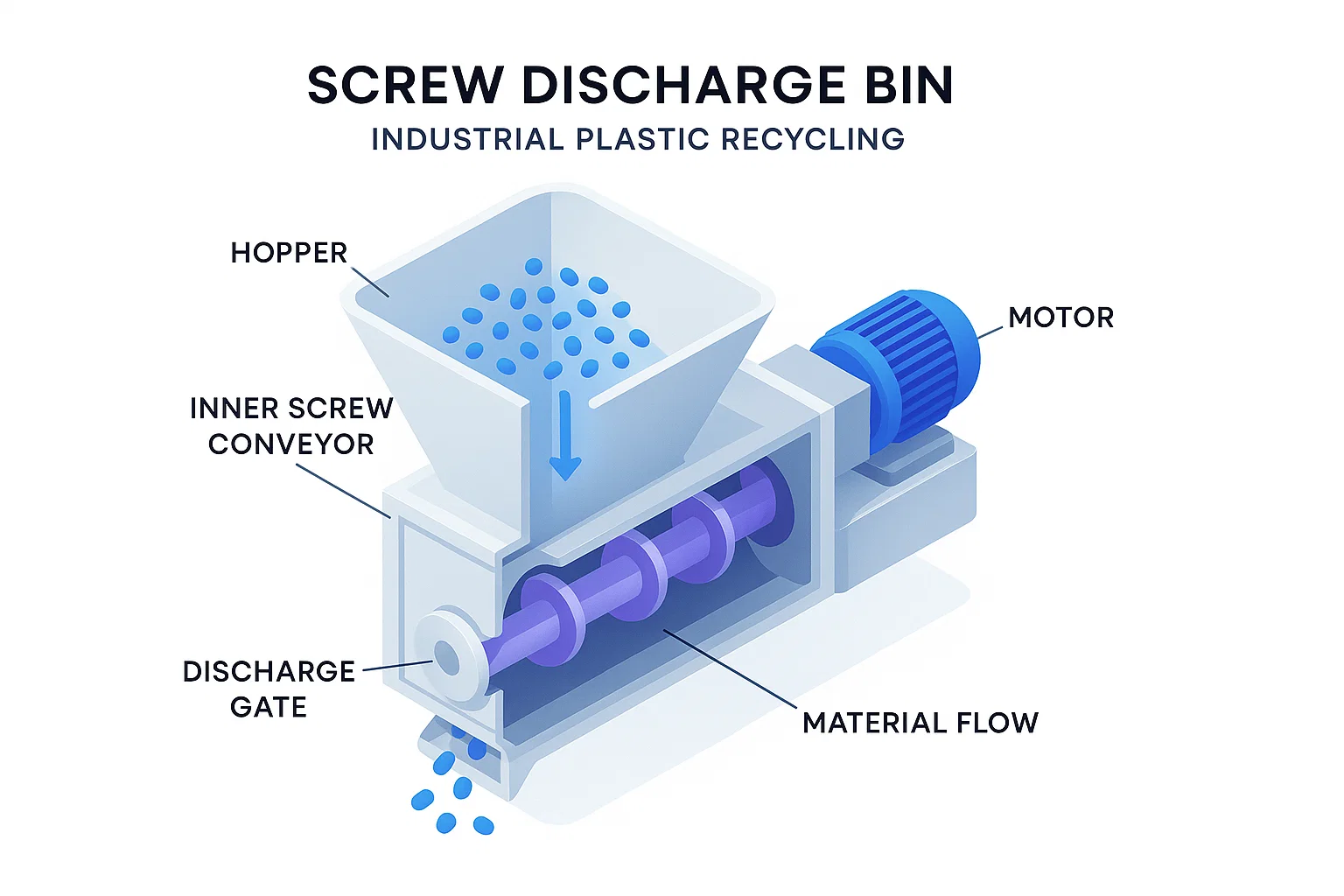
Applications in Plastic Recycling
Primary Processing Applications
Post-Washing Storage: Following washing operations, wet plastic flakes require controlled discharge to prevent compaction and ensure proper drainage. Screw discharge bins excel in this application by maintaining material movement without damaging delicate flakes.
Pellet Handling: After pelletising operations, hot plastic pellets need controlled cooling and discharge. The gentle action of screw discharge bins prevents pellet deformation whilst maintaining consistent feed rates to packaging or further processing equipment.
Secondary Processing Integration
Blending Operations: When multiple plastic streams require mixing, screw discharge bins can be configured in parallel to provide precise flow control for accurate blend ratios.
Quality Control Points: Strategic placement of screw discharge bins creates natural sampling points where quality control personnel can monitor material characteristics without disrupting production flow.
Types and Configurations
Standard Configurations
Single Screw Systems: The most common configuration, featuring one screw conveyor optimised for general-purpose plastic handling applications.
Twin Screw Arrangements: For high-capacity operations or difficult materials, twin screw systems provide increased throughput and improved material handling characteristics.
Specialised Designs
Heated Bins: For materials requiring temperature maintenance, heated screw discharge bins incorporate steam or electric heating systems to prevent material solidification.
Dust-Tight Models: When handling fine plastic powders or dusty materials, sealed designs with dust collection ports maintain clean working environments.
Sanitary Versions: For food-grade plastic recycling, special surface finishes and washdown capabilities ensure hygiene compliance.
Benefits for Industrial Operations
Operational Advantages
Consistent Flow Rates: Unlike gravity-fed systems that can experience variable discharge rates, screw discharge bins maintain steady output regardless of material level or characteristics.
Reduced Labour Requirements: Automated operation eliminates the need for manual intervention to clear blockages or restart material flow.
Improved Safety: Enclosed design and mechanical discharge systems reduce worker exposure to materials and eliminate the need for manual bin agitation.
Economic Benefits
Increased Throughput: Consistent material flow prevents downstream equipment starvation, maximising overall line efficiency and production capacity.
Reduced Maintenance: Elimination of bridging and material hang-up reduces wear on downstream equipment and decreases unplanned maintenance requirements.
Quality Consistency: Controlled discharge maintains material integrity and reduces contamination risks.
Selection Criteria and Specifications
Capacity Considerations
Proper sizing requires careful analysis of upstream production rates, downstream equipment requirements, and desired storage capacity. Industry best practice suggests sizing bins to provide 15-30 minutes of storage at maximum production rates.
Material Compatibility
Different plastic materials exhibit varying flow characteristics. PET flakes behave differently from HDPE pellets, requiring specific screw designs and operating parameters. Key considerations include:
- Material bulk density
- Particle size distribution
- Moisture content
- Temperature requirements
- Abrasiveness characteristics
Integration Requirements
Modern recycling facilities operate as integrated systems where equipment interfaces are critical. Essential integration factors include:
- Control system compatibility
- Physical space constraints
- Maintenance access requirements
- Safety system integration
Installation and Maintenance
Installation Best Practices
Proper installation begins with adequate foundation design to support fully loaded bin weights and dynamic loads from the screw mechanism. Structural connections must accommodate thermal expansion and vibration whilst maintaining precise alignment of drive components.
Electrical installation requires attention to motor protection, variable frequency drive compatibility, and integration with plant control systems. Safety systems including emergency stops, access interlocks, and level alarms must be properly configured and tested.
Preventive Maintenance Programmes
Successful operation depends on regular maintenance schedules addressing key wear points and system components.
Daily Inspections: Visual checks of discharge rates, unusual noises, or vibrations that might indicate developing problems.
Weekly Maintenance: Lubrication of bearing points, inspection of drive belt tension, and verification of control system operation.
Monthly Services: Detailed inspection of screw wear, shaft alignment checks, and calibration of level sensors and flow controls.
Annual Overhauls: Complete drive system inspection, bearing replacement as required, and comprehensive safety system testing.
Troubleshooting Common Issues
Flow Rate Problems
Inconsistent discharge rates often indicate wear in the screw flights or changes in material characteristics. Systematic troubleshooting involves checking screw wear patterns, verifying drive system operation, and analysing material properties.
Material Bridging
Despite mechanical agitation, some materials may still bridge under specific conditions. Solutions include adjusting screw speed, modifying discharge gate settings, or installing supplementary flow aids.
Drive System Issues
Motor overload conditions typically result from material compaction, foreign object contamination, or mechanical binding. Proper diagnosis requires systematic checking of electrical systems, mechanical components, and material conditions.
Future Developments and Innovations
The plastic recycling industry continues evolving, driving innovations in material handling equipment. Emerging trends include smart sensors for predictive maintenance, advanced materials for improved wear resistance, and integrated systems that optimise energy consumption whilst maximising throughput.
Artificial intelligence and machine learning applications are beginning to appear in process control systems, enabling predictive adjustments based on material characteristics and production requirements.
Conclusion
Screw discharge bins represent a critical investment in modern plastic recycling operations, providing the controlled material handling necessary for efficient, consistent production. Their ability to handle diverse plastic materials whilst maintaining steady flow rates makes them indispensable for facilities seeking to maximise throughput and product quality.
For industrial recycling equipment buyers, understanding the capabilities and requirements of screw discharge bins ensures informed decisions that support long-term operational success. As the recycling industry continues advancing towards greater efficiency and automation, these robust, reliable systems will remain fundamental to successful operations.
When evaluating screw discharge bins for your facility, consider not just immediate requirements but also future expansion plans and evolving material handling needs. Proper selection and installation of these systems provides the foundation for years of reliable, efficient operation in your plastic recycling facility.



